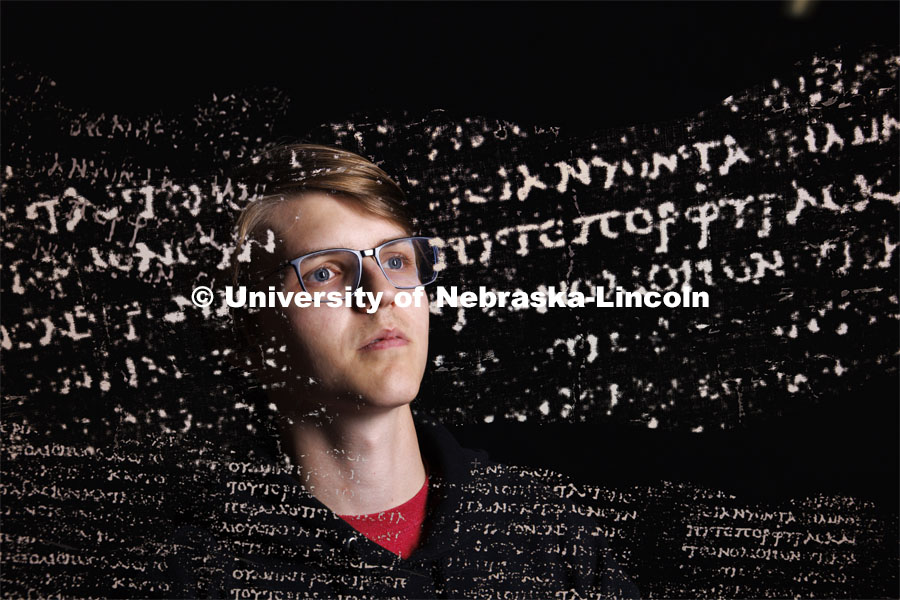
Title:
231103 Farritor 068 (permalink)
Order Instructions:
To order this photo, send Craig Chandler an email and include the text '231103 Farritor 068'.
Caption:
Luke Farritor, a senior at Nebraska in the Jeffrey S. Raikes School of Computer Science and Engineering, with superimposed Greek text from a nearly 2,000-year-old scroll that his work is helping to decipher. Farritor, recently won a global contest to read the first text inside a carbonized scroll from the ancient Roman city of Herculaneum. That text had been unreadable since the eruption of Mount Vesuvius in A.D. 79. Farritor developed a machine-learning algorithm that detected the Greek word πορϕυρας (purple) on the charred papyrus scroll, which is too delicate to unroll using MRI scans. In this multiple exposure, the word πορϕυρας is in the line of text appearing in the same plane to the right of his eyes. November 3, 2023. Photo by Craig Chandler / University Communication and Marketing.
Copyright:
© 2023, The Board of Regents of the University of Nebraska. All rights reserved.